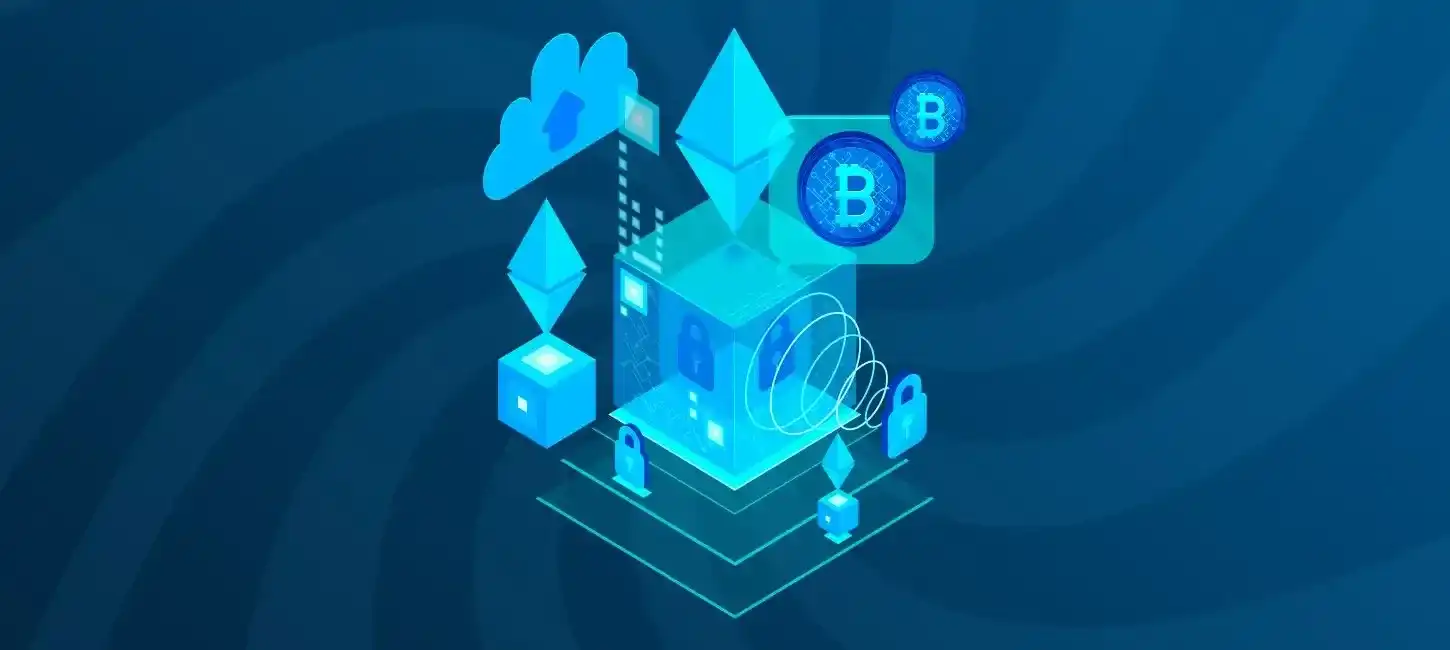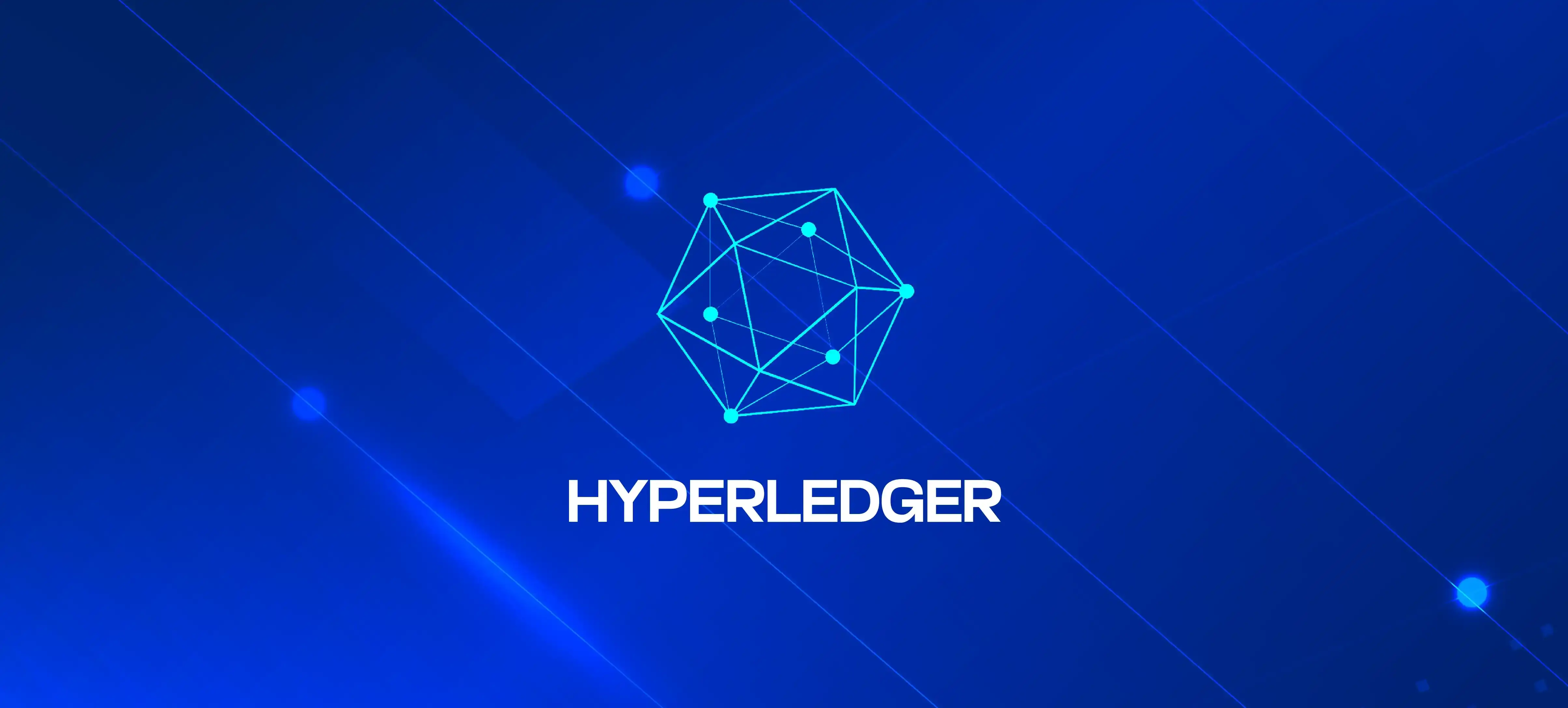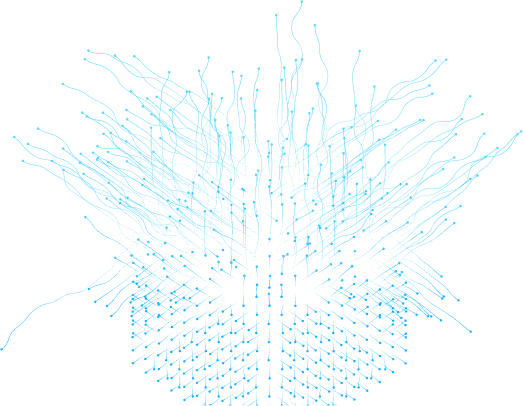
Top 5 Layer 0 Blockchain Platforms in 2023
Table of Contents
The demand for blockchain technology is growing exponentially, as the technology itself is rapidly developing. While blockchain development and maintenance used to be a complex and costly endeavor, recent technological advances have made the process much simpler. And several new blockchain development platforms that are designed to make it simple for developers to build layer 1 networks.
In this article, we will explore the top blockchain platforms that can help you to build layer 1 blockchains for specific use cases. We will discuss the features, benefits, and drawbacks of these platforms so that you can choose the right one for your needs. These platforms allow application-specific blockchains to communicate with each other through layer 0 networks, which provides interoperability.
Before exploring the blockchain development platforms, let’s first get over with the types of blockchain platforms.

Types of Blockchain Platforms
Blockchain platforms can be broadly categorized into two main types:
Layer 1 Blockchain Platforms
Layer 1 platforms allow developers to create standalone and customisable blockchains from scratch. Within layer 1, developers have full control over the blockchain's architecture, consensus mechanism, and functionalities. If you are looking for an application specific blockchain, Layer 1 platforms are ideal for it.
Layer 2 Blockchain Platforms
Using their underlying security and consensus mechanisms Layer 2 platforms are built on top of existing blockchains. Layer 2 platforms offer solutions to improve scalability, reduce transaction costs, and enhance the overall performance of the primary blockchain. Developers use Layer 2 platforms for implementing solutions like payment channels, sidechains, and state channels. They provide an efficient way to handle a high volume of transactions without burdening the main blockchain.
Now, let’s get on with top five blockchain building platform for developers.
Polkadot
Polkadot is an impressive blockchain platform that operates as a multi-chain and fully shareable system. It offers scalability through reciprocal blockchains, all within a trust-free environment. The primary goal of Polkadot is to connect various exceptional blockchains while emphasizing governance and upgradability at their core.
Substrate
First, we have the Substrate, a blockchain building framework by Parity Technologies. It is a modular framework that makes it easy for developers to create custom blockchains that meet their specific needs. Substrate-built blockchains can be either standalone or parallel. Standalone chains run independently, while parallel chains run alongside other chains and benefit from the shared security of the Polkadot ecosystem to create private blockchain platforms.

FRAME
FRAME is a modular and extensible framework that makes Substrate flexible and adaptable to different use cases. It includes Rust-based programs and libraries that simplify the development of application-specific logic. FRAME's functionality is provided in the form of plug-in modules called pallets, which you can add or configure to meet specific requirements.
Features include in Substrate
Modular design: Substrate is a modular framework, which helps developers create custom blockchains by integrating different pallets. This makes it possible to create application-specific blockchains for distinct use cases.
Scalability: It can efficiently process a large number of nodes and transactions, making it an appropriate choice for high throughput applications.
Security: Substrate uses a number of security features to protect data and prevent attacks, including encryption, consensus algorithms, and access control.
Customizability: Substrate is highly customizable. Developers can change the underlying code to meet their specific requirements.
Interoperability: Substrate is designed to be able to communicate with other blockchains.
Cosmos
Cosmos is a network of blockchains that are connected to each other. It was created by the Interchain Foundation, and it is known for its scalability and interoperability. Cosmos SDK allows developers to create applications that can be deployed across multiple blockchains. Developers can also create blockchain lending platforms to allow investors to lend out their currencies.
Cosmos SDK
Cosmos SDK is the framework that you can use to build custom application-specific blockchains. It can be used to build both public and permissioned blockchains, and it supports a variety of consensus mechanisms, including Proof-of-Stake (PoS) and Proof-of-Authority (PoA).
It is designed to be secure and scalable, and it uses a modular approach that allows developers to easily add new features. By integrating the pre-built modules it is easy to import and configure these into the blockchain. This means that you can easily add new features to your blockchain application by importing modules that have already been built by other developers.
Ignite CLI
To go with the easy approach in cosmos then use the Ignite CLI. Its command line tool helps developers to build and maintain their sovereign blockchain applications that are built with the Cosmos SDK. You get Cosmos SDK and Tendermint, which are popular blockchain frameworks. The blockchains within Ignite CLI come with a command-line interface. This command-line makes it easier for you to create validators, manage keys, and send tokens. It also creates the Vue.js web app template with a set of components and Vuex modules.
Features include in Cosmos
Inter-blockchain Communication (IBC) protocol: The Inter-blockchain Communication (IBC) protocol is a standard that allows blockchains to communicate with each other. This means that applications built on different blockchains can interact with each other, which opens up new possibilities for decentralized applications.
Modularity: Cosmos is a modular framework, which means that developers can create custom blockchains by combining different modules.
Scalability: The scalability of Cosmos makes it suitable for building high-performance blockchain applications. Cosmos scalability makes it suitable for building high-performance blockchain applications. For example, you can use Cosmos to build a blockchain-based trading platform capable of handling a large number of trades per second.
Avalanche
Avalanche is among the popular open source blockchain platforms that provides a blockchain network with remarkable scalability and customizability. It employs a distinctive consensus protocol called Avalanche consensus, which facilitates high throughput, low latency, and efficient transaction processing. By utilizing Avalanche, developers gain access to a flexible environment to construct and launch their decentralized applications (dApps).
A notable feature of Avalanche is its subnet capability, which empowers developers to establish multiple virtual blockchains within the Avalanche network. This capability enhances the platform's versatility and opens up opportunities for tailored blockchain solutions. These subnets can have their own validators and consensus rules, providing developers with the flexibility to customize their blockchains according to their specific requirements. Avalanche is compatible with existing Ethereum dApps that support the Ethereum Virtual Machine (EVM).

Primary Network
Avalanche is a diverse network of blockchains, distinguishing itself from homogeneous networks that house all applications within a single chain. In heterogeneous networks, the possibility exists to establish separate chains specifically tailored to different applications.
Primary network has three blockchain runs on subnets:
-
The Platform Chain (P-Chain)
-
The Exchange Chain (X-Chain)
-
The Contract Chain (C-Chain)
P-Chain
The P-Chain takes charge of overseeing validator and Subnet-related tasks. It provides support for various operations on the platform, including the creation of new blockchains and Subnets, the inclusion of validators in Subnets, staking activities, and other platform-level operations. The P-Chain functions as a manifestation of the Platform Virtual Machine.
X-Chain
The X-Chain handles the functionality related to Avalanche Native Tokens, which are digital smart assets. These smart assets represent real-world resources such as equity or bonds and are governed by specific rules that dictate their behavior, such as restrictions on trading until a certain time. The X-Chain API facilitates the creation and trading of Avalanche Native Tokens.
C-Chain
The C-Chain serves as an implementation of the Ethereum Virtual Machine (EVM) and is designed to be compatible with Geth's API. It provides support for deploying and executing smart contracts written in Solidity.
Venom
The Venom blockchain is a dynamic sharding-enabled heterogeneous multi-blockchain system. Venom is an emerging blockchain building platform that focuses on scalability, security, and ease of use. It aims to simplify the blockchain development process by providing a user-friendly interface and comprehensive toolset for developers. Venom utilizes both Proof of Stake (PoS) and Proof of Authority (PoA) so that both security and efficiency are intact.
The platform offers a modular architecture, allowing developers to easily integrate custom modules and smart contracts into their blockchain applications. Venom also provides built-in privacy features, enabling developers to build privacy-focused applications without compromising on security, earning it a place among the best blockchain development platforms.

Masterchain
In Venom the master is the layer-0 chain that handles the communication and coordination of, shardchains, workchains, and accounts. The masterchain takes on the responsibility of message routing, network configuration maintenance, and storage of information regarding validators, their stakes, and election rounds. It acts as a central hub that stores and disseminates the current shard configuration, along with the most recent block hashes of each shardchain.
Workerchain
A workchain is a layer-1 blockchain that is secured by the global validators set. It is connected to the masterchain and gets the security advantage of the masterchain. Utilizing the security of the masterchain, a workchain can possess its own state transition function, virtual machine, cryptographic primitives, transaction or block structures, as well as native cryptocurrencies.
Horizen
SInce its launch in May 2017, Horizen has always been a privacy-centric blockchain network. Its founders, Robert Viglione and Rolf Versluis initially introduced it as a crypto currency, ZenCash. However, they soon realized that zk-SNARKs (Zero-Knowledge Succinct Non-Interactive Argument of Knowledge) has several more applications apart from secure transactions on Blockchain.
Later in 2018, they rebranded it as Horizen, and created a general purpose blockchain ecosystem for secure communication, media curation, and much more. They used Zero-Knowledge of Proof to make it safer and untraceable.
The Horizen is a highly scalable blockchain ecosystem with Cross-Chain Transfer Protocol. This CCT protocol uses a segregated and self-relying sidechain network. The Horizen blockchain platform comprises two primary technologies, the main blockchain and parallel sidechains.

MainChain
The mainchain of Horizen blockchain platform is very similar to the bitcoin blockchain, but with slight modifications. Like Bitcoin, Horizen uses PoW and delayed block penalty to overcome double-spend attacks. The mainchain primarily provides a storage layer and peer-to-peer transmissions using ZEN. Moreover, it also provides necessary infrastructure for the smooth operation of the sidechain.
Sidechain
Horizen sidechain are interoperable with the mainchain. Using sidechains, developers can make custom applications and decentralized finance protocols while still being able to utilize security and consensus management from the mainchain. Developers can then use ZEN to bridge mainchain and sidechain. You can use this currency within all applications built on Horizen platform.
Conclusion
Blockchain building platforms offer diverse features and capabilities to simplify blockchain development. With their focus on scalability, security, and interoperability, these platforms are poised to drive the adoption and integration of blockchain technology in various industries, paving the way for a decentralized and interconnected future.
At InvoBlox, we have blockchain engineers at the forefront of leveraging these cutting-edge blockchain building platforms to deliver innovative and tailor-made solutions for clients across the industry. If you have any questions regarding the development platforms for the blockchain, don’t hesitate to contact us.
Comparison of Blockchain Platforms

Table of Contents
The demand for blockchain technology is growing exponentially, as the technology itself is rapidly developing. While blockchain development and maintenance used to be a complex and costly endeavor, recent technological advances have made the process much simpler. And several new blockchain development platforms that are designed to make it simple for developers to build layer 1 networks.
In this article, we will explore the top blockchain platforms that can help you to build layer 1 blockchains for specific use cases. We will discuss the features, benefits, and drawbacks of these platforms so that you can choose the right one for your needs. These platforms allow application-specific blockchains to communicate with each other through layer 0 networks, which provides interoperability.
Before exploring the blockchain development platforms, let’s first get over with the types of blockchain platforms.

Types of Blockchain Platforms
Blockchain platforms can be broadly categorized into two main types:
Layer 1 Blockchain Platforms
Layer 1 platforms allow developers to create standalone and customisable blockchains from scratch. Within layer 1, developers have full control over the blockchain's architecture, consensus mechanism, and functionalities. If you are looking for an application specific blockchain, Layer 1 platforms are ideal for it.
Layer 2 Blockchain Platforms
Using their underlying security and consensus mechanisms Layer 2 platforms are built on top of existing blockchains. Layer 2 platforms offer solutions to improve scalability, reduce transaction costs, and enhance the overall performance of the primary blockchain. Developers use Layer 2 platforms for implementing solutions like payment channels, sidechains, and state channels. They provide an efficient way to handle a high volume of transactions without burdening the main blockchain.
Now, let’s get on with top five blockchain building platform for developers.
Polkadot
Polkadot is an impressive blockchain platform that operates as a multi-chain and fully shareable system. It offers scalability through reciprocal blockchains, all within a trust-free environment. The primary goal of Polkadot is to connect various exceptional blockchains while emphasizing governance and upgradability at their core.
Substrate
First, we have the Substrate, a blockchain building framework by Parity Technologies. It is a modular framework that makes it easy for developers to create custom blockchains that meet their specific needs. Substrate-built blockchains can be either standalone or parallel. Standalone chains run independently, while parallel chains run alongside other chains and benefit from the shared security of the Polkadot ecosystem to create private blockchain platforms.

FRAME
FRAME is a modular and extensible framework that makes Substrate flexible and adaptable to different use cases. It includes Rust-based programs and libraries that simplify the development of application-specific logic. FRAME's functionality is provided in the form of plug-in modules called pallets, which you can add or configure to meet specific requirements.
Features include in Substrate
Modular design: Substrate is a modular framework, which helps developers create custom blockchains by integrating different pallets. This makes it possible to create application-specific blockchains for distinct use cases.
Scalability: It can efficiently process a large number of nodes and transactions, making it an appropriate choice for high throughput applications.
Security: Substrate uses a number of security features to protect data and prevent attacks, including encryption, consensus algorithms, and access control.
Customizability: Substrate is highly customizable. Developers can change the underlying code to meet their specific requirements.
Interoperability: Substrate is designed to be able to communicate with other blockchains.
Cosmos
Cosmos is a network of blockchains that are connected to each other. It was created by the Interchain Foundation, and it is known for its scalability and interoperability. Cosmos SDK allows developers to create applications that can be deployed across multiple blockchains. Developers can also create blockchain lending platforms to allow investors to lend out their currencies.
Cosmos SDK
Cosmos SDK is the framework that you can use to build custom application-specific blockchains. It can be used to build both public and permissioned blockchains, and it supports a variety of consensus mechanisms, including Proof-of-Stake (PoS) and Proof-of-Authority (PoA).
It is designed to be secure and scalable, and it uses a modular approach that allows developers to easily add new features. By integrating the pre-built modules it is easy to import and configure these into the blockchain. This means that you can easily add new features to your blockchain application by importing modules that have already been built by other developers.
Ignite CLI
To go with the easy approach in cosmos then use the Ignite CLI. Its command line tool helps developers to build and maintain their sovereign blockchain applications that are built with the Cosmos SDK. You get Cosmos SDK and Tendermint, which are popular blockchain frameworks. The blockchains within Ignite CLI come with a command-line interface. This command-line makes it easier for you to create validators, manage keys, and send tokens. It also creates the Vue.js web app template with a set of components and Vuex modules.
Features include in Cosmos
Inter-blockchain Communication (IBC) protocol: The Inter-blockchain Communication (IBC) protocol is a standard that allows blockchains to communicate with each other. This means that applications built on different blockchains can interact with each other, which opens up new possibilities for decentralized applications.
Modularity: Cosmos is a modular framework, which means that developers can create custom blockchains by combining different modules.
Scalability: The scalability of Cosmos makes it suitable for building high-performance blockchain applications. Cosmos scalability makes it suitable for building high-performance blockchain applications. For example, you can use Cosmos to build a blockchain-based trading platform capable of handling a large number of trades per second.
Avalanche
Avalanche is among the popular open source blockchain platforms that provides a blockchain network with remarkable scalability and customizability. It employs a distinctive consensus protocol called Avalanche consensus, which facilitates high throughput, low latency, and efficient transaction processing. By utilizing Avalanche, developers gain access to a flexible environment to construct and launch their decentralized applications (dApps).
A notable feature of Avalanche is its subnet capability, which empowers developers to establish multiple virtual blockchains within the Avalanche network. This capability enhances the platform's versatility and opens up opportunities for tailored blockchain solutions. These subnets can have their own validators and consensus rules, providing developers with the flexibility to customize their blockchains according to their specific requirements. Avalanche is compatible with existing Ethereum dApps that support the Ethereum Virtual Machine (EVM).

Primary Network
Avalanche is a diverse network of blockchains, distinguishing itself from homogeneous networks that house all applications within a single chain. In heterogeneous networks, the possibility exists to establish separate chains specifically tailored to different applications.
Primary network has three blockchain runs on subnets:
-
The Platform Chain (P-Chain)
-
The Exchange Chain (X-Chain)
-
The Contract Chain (C-Chain)
P-Chain
The P-Chain takes charge of overseeing validator and Subnet-related tasks. It provides support for various operations on the platform, including the creation of new blockchains and Subnets, the inclusion of validators in Subnets, staking activities, and other platform-level operations. The P-Chain functions as a manifestation of the Platform Virtual Machine.
X-Chain
The X-Chain handles the functionality related to Avalanche Native Tokens, which are digital smart assets. These smart assets represent real-world resources such as equity or bonds and are governed by specific rules that dictate their behavior, such as restrictions on trading until a certain time. The X-Chain API facilitates the creation and trading of Avalanche Native Tokens.
C-Chain
The C-Chain serves as an implementation of the Ethereum Virtual Machine (EVM) and is designed to be compatible with Geth's API. It provides support for deploying and executing smart contracts written in Solidity.
Venom
The Venom blockchain is a dynamic sharding-enabled heterogeneous multi-blockchain system. Venom is an emerging blockchain building platform that focuses on scalability, security, and ease of use. It aims to simplify the blockchain development process by providing a user-friendly interface and comprehensive toolset for developers. Venom utilizes both Proof of Stake (PoS) and Proof of Authority (PoA) so that both security and efficiency are intact.
The platform offers a modular architecture, allowing developers to easily integrate custom modules and smart contracts into their blockchain applications. Venom also provides built-in privacy features, enabling developers to build privacy-focused applications without compromising on security, earning it a place among the best blockchain development platforms.

Masterchain
In Venom the master is the layer-0 chain that handles the communication and coordination of, shardchains, workchains, and accounts. The masterchain takes on the responsibility of message routing, network configuration maintenance, and storage of information regarding validators, their stakes, and election rounds. It acts as a central hub that stores and disseminates the current shard configuration, along with the most recent block hashes of each shardchain.
Workerchain
A workchain is a layer-1 blockchain that is secured by the global validators set. It is connected to the masterchain and gets the security advantage of the masterchain. Utilizing the security of the masterchain, a workchain can possess its own state transition function, virtual machine, cryptographic primitives, transaction or block structures, as well as native cryptocurrencies.
Horizen
SInce its launch in May 2017, Horizen has always been a privacy-centric blockchain network. Its founders, Robert Viglione and Rolf Versluis initially introduced it as a crypto currency, ZenCash. However, they soon realized that zk-SNARKs (Zero-Knowledge Succinct Non-Interactive Argument of Knowledge) has several more applications apart from secure transactions on Blockchain.
Later in 2018, they rebranded it as Horizen, and created a general purpose blockchain ecosystem for secure communication, media curation, and much more. They used Zero-Knowledge of Proof to make it safer and untraceable.
The Horizen is a highly scalable blockchain ecosystem with Cross-Chain Transfer Protocol. This CCT protocol uses a segregated and self-relying sidechain network. The Horizen blockchain platform comprises two primary technologies, the main blockchain and parallel sidechains.

MainChain
The mainchain of Horizen blockchain platform is very similar to the bitcoin blockchain, but with slight modifications. Like Bitcoin, Horizen uses PoW and delayed block penalty to overcome double-spend attacks. The mainchain primarily provides a storage layer and peer-to-peer transmissions using ZEN. Moreover, it also provides necessary infrastructure for the smooth operation of the sidechain.
Sidechain
Horizen sidechain are interoperable with the mainchain. Using sidechains, developers can make custom applications and decentralized finance protocols while still being able to utilize security and consensus management from the mainchain. Developers can then use ZEN to bridge mainchain and sidechain. You can use this currency within all applications built on Horizen platform.
Conclusion
Blockchain building platforms offer diverse features and capabilities to simplify blockchain development. With their focus on scalability, security, and interoperability, these platforms are poised to drive the adoption and integration of blockchain technology in various industries, paving the way for a decentralized and interconnected future.
At InvoBlox, we have blockchain engineers at the forefront of leveraging these cutting-edge blockchain building platforms to deliver innovative and tailor-made solutions for clients across the industry. If you have any questions regarding the development platforms for the blockchain, don’t hesitate to contact us.
Comparison of Blockchain Platforms

FAQS
There are at least 1,000 blockchains, each belonging to one of the four types of blockchain networks. Although the fundamental idea behind blockchain is singular—a decentralized data transfer system—there are multiple platforms offering diverse solutions within the industry.
The best blockchain for developers depends on their project's needs. Ethereum is popular for dApps and smart contracts, while Binance Smart Chain offers Ethereum compatibility and low fees. Polkadot allows interoperable blockchains, Solana excels in high-performance apps, and Avalanche offers scalability. Algorand prioritizes scalability and security. Consider project requirements to make the best choice.
The best programming language for blockchain development varies based on the platform and application. For Ethereum, Solidity is essential for smart contracts. Rust is popular with Substrate-based blockchains. Go is commonly used in projects like Hyperledger Fabric. JavaScript is prominent for web-based dApps. Python is used in certain blockchain projects like NEO. Choose the language based on the platform and your familiarity.
Here is the List of Best blockchain platforms:
Ethereum
Binance Smart Chain (BSC)
Polkadot
Horizen
Solana
Avalanche
Algorand
Venom
Cosmos





